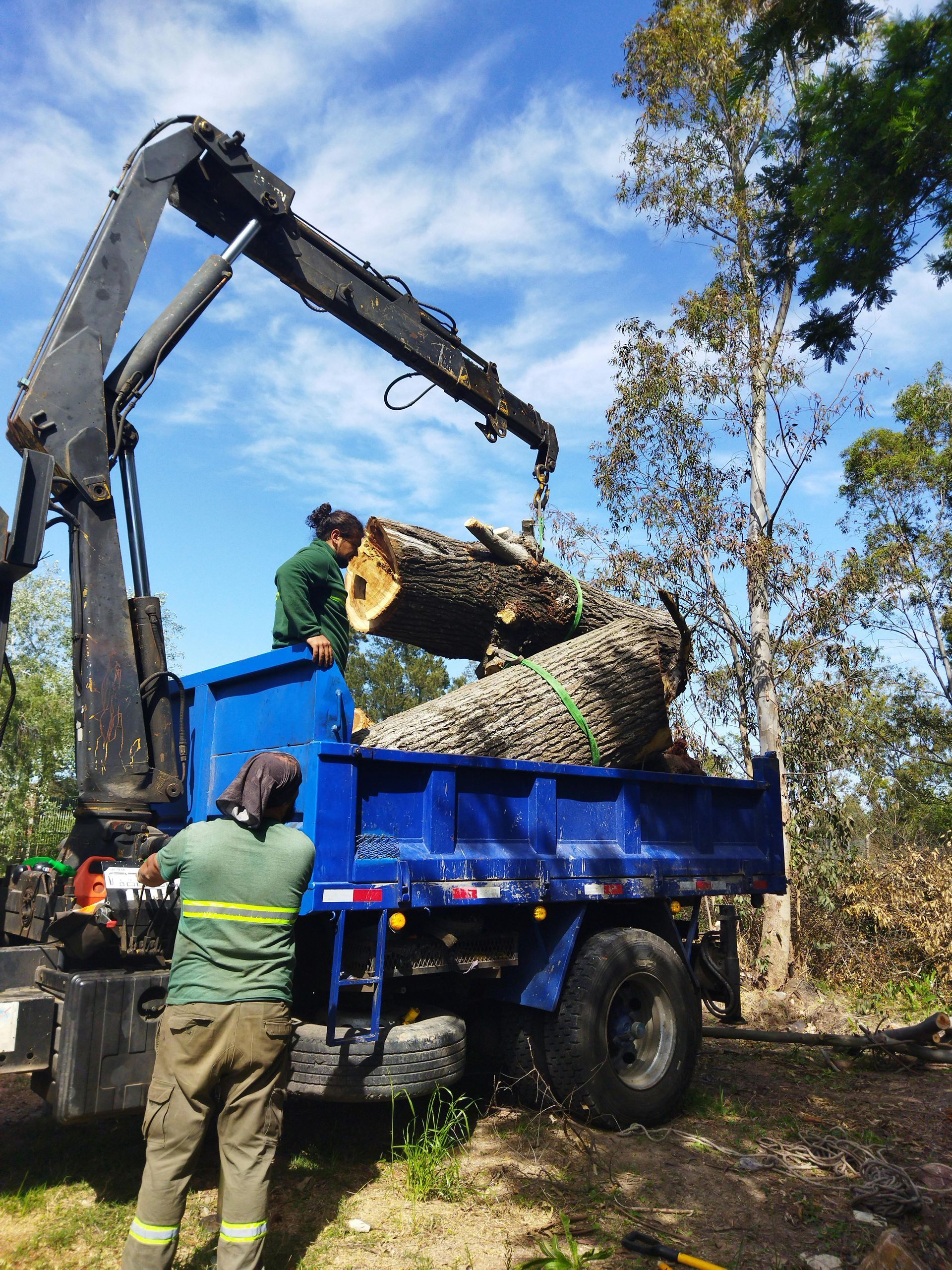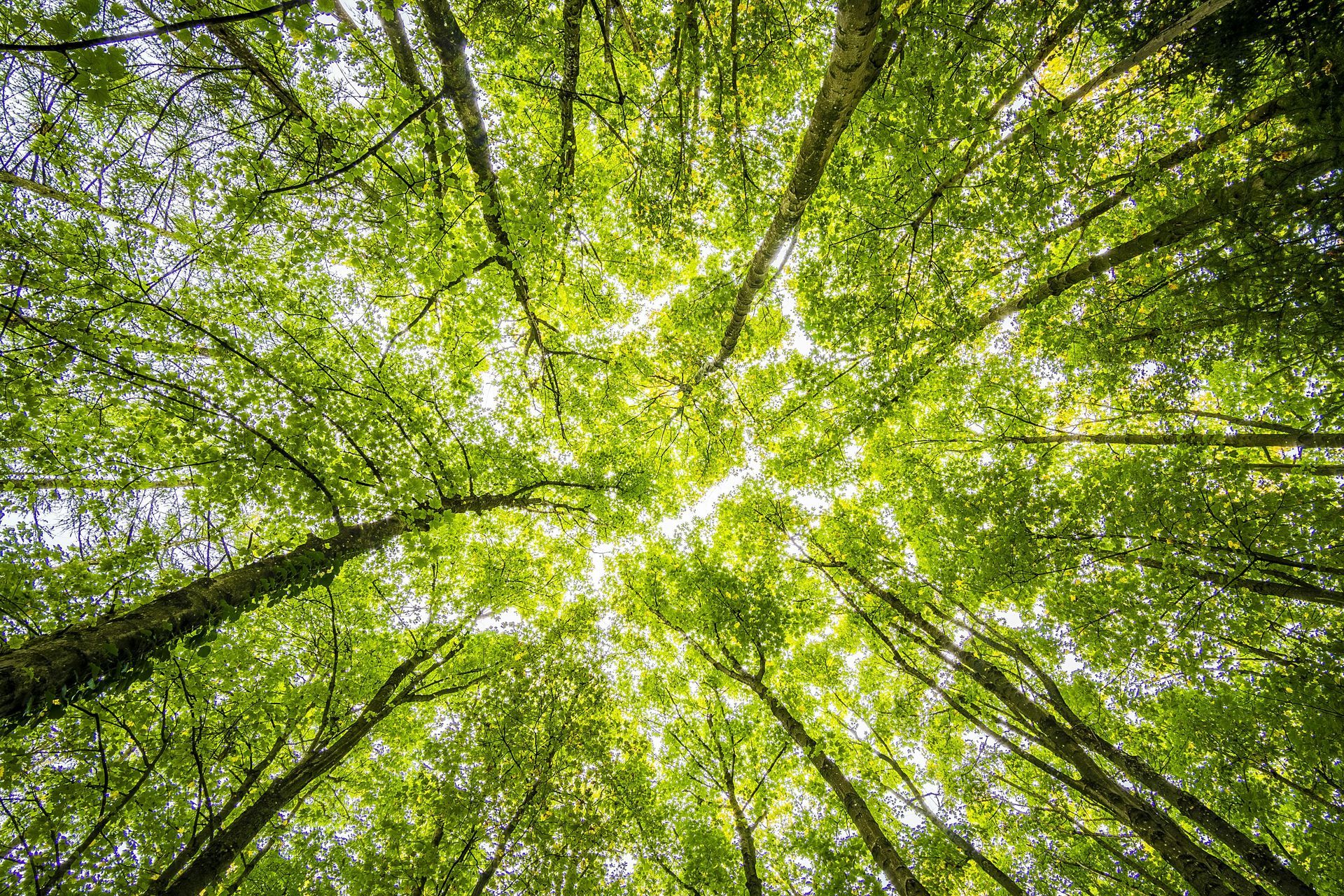How Aurora Tree Service Helps You Identify Sick Trees Before It's Too Late
Your trees are silent guardians of your property, providing shade, beauty, and environmental benefits year after year. But like all living things, trees can fall victim to disease, pest infestations, and environmental stress that threaten their health and longevity. The challenge for most homeowners is recognizing when a tree is in trouble before it becomes a safety hazard or dies entirely.
Aurora Tree Service specializes in diagnosing tree health issues with the expertise and tools necessary to catch problems early. Our certified arborists understand that early detection is the key to saving trees, protecting your property investment, and maintaining the natural beauty of your landscape. This comprehensive guide explores how we help homeowners identify sick trees and what you can expect from our professional diagnostic process.
The Hidden Dangers of Sick Trees
Tree diseases and health issues often develop gradually, making them difficult for untrained eyes to detect until significant damage has occurred. What appears to be minor leaf discoloration or a small patch of missing bark could signal serious underlying problems that require immediate attention.
Sick trees pose multiple risks beyond their eventual death. Diseased or weakened trees can drop branches without warning, potentially causing property damage or personal injury. Root diseases can cause trees to become unstable, increasing the likelihood of complete tree failure during storms or high winds.
The financial implications extend beyond tree removal costs. Dead or dying trees near structures can affect property values, while emergency tree removal after storm damage typically costs significantly more than preventive care. Insurance claims related to tree damage often require documentation that the tree was healthy or that known issues were being properly addressed.
Aurora Tree Service's Expert Diagnostic Process
Our comprehensive tree health assessment combines visual expertise with scientific tools to provide accurate diagnoses and effective treatment recommendations. This systematic approach ensures we identify both obvious problems and subtle signs that might indicate developing issues.
Professional Visual Inspection
Our certified arborists begin every assessment with a thorough visual inspection that examines the tree from roots to crown. This inspection goes far beyond what most homeowners would notice, as we're trained to recognize subtle signs that indicate specific diseases or pest problems.
We examine the tree's overall structure, looking for signs of decline such as dead branches, unusual growth patterns, or changes in leaf density. Bark inspection reveals important clues about internal health, including cankers, discoloration, or unusual growths that suggest fungal infections or other diseases.
The root zone receives special attention, as many tree health problems begin below ground. We look for signs of root rot, soil compaction, and drainage issues that could be stressing the tree. Mushrooms or other fungi growing near the base often indicate serious root system problems that require immediate evaluation.
Advanced Diagnostic Tools and Techniques
While visual inspection provides valuable information, some tree health issues require specialized tools for accurate diagnosis. Aurora Tree Service utilizes advanced diagnostic equipment that allows us to assess tree health beyond what the naked eye can detect.
Resistograph Testing involves drilling tiny holes into the trunk to measure wood density and identify internal decay or hollow areas. This minimally invasive technique helps us assess structural integrity without causing significant damage to healthy trees.
Soil Testing and Analysis reveals critical information about the growing environment that directly affects tree health. We test soil pH, nutrient levels, compaction, and drainage to identify conditions that may be contributing to tree stress or preventing recovery from disease.
Microscopic Analysis of leaf, bark, or root samples helps identify specific pathogens, fungi, or other disease-causing organisms. This precise identification allows us to recommend targeted treatments that address the actual cause rather than just treating symptoms.
Comprehensive Health Documentation
Every assessment includes detailed documentation that provides you with a clear understanding of your tree's current condition and any recommended actions. Our reports include photographs, measurement data, and clear explanations of findings in terms that homeowners can understand.
This documentation serves multiple purposes: it helps you make informed decisions about treatment options, provides a baseline for monitoring tree health over time, and can be valuable for insurance purposes if tree-related issues arise in the future.
Common Tree Health Issues We Identify
Tree diseases and health problems vary significantly based on species, environmental conditions, and care history. Aurora Tree Service has experience diagnosing and treating the full spectrum of tree health issues commonly found in our region.
Fungal Diseases and Infections
Fungal diseases represent some of the most common and destructive tree health problems. These diseases often begin with subtle symptoms that gradually worsen if left untreated.
Anthracnose appears as irregular brown patches on leaves, often accompanied by premature leaf drop. While it may seem minor, severe infections can weaken trees and make them susceptible to other problems. We identify anthracnose by examining leaf patterns and can recommend preventive treatments for future seasons.
Root Rot Diseases are among the most serious fungal problems because they attack the tree's foundation. Symptoms include yellowing leaves, stunted growth, and mushrooms growing near the base. Our soil and root zone analysis can identify root rot before it becomes fatal.
Canker Diseases create sunken, discolored areas on bark that can girdle branches or trunks. Early identification allows for surgical removal of affected areas and treatment to prevent spread to healthy parts of the tree.
Pest Infestations and Damage
Insect pests can cause significant damage through direct feeding, introducing diseases, or creating entry points for other problems. Different pests require different treatment approaches, making accurate identification crucial for effective control.
Bark Beetles create characteristic patterns of small holes and sawdust around the trunk base. These destructive pests can kill healthy trees rapidly, but early detection and treatment can often save infested trees.
Scale Insects appear as small, waxy bumps on branches and leaves, gradually weakening trees by sucking plant juices. Our inspection identifies scale populations before they reach damaging levels and determines the most effective treatment timing.
Borers create tunnels in wood that can severely weaken tree structure. We identify borer activity through exit holes, sawdust, and other signs, then recommend appropriate treatment based on the specific borer species involved.
Environmental Stress and Damage
Environmental factors often contribute to tree health problems or make trees more susceptible to diseases and pests. Identifying these stressors is essential for developing comprehensive treatment plans.
Drought Stress manifests in various ways depending on tree species and severity. We assess soil moisture, examine root systems, and evaluate tree response to determine if drought is affecting health and what intervention might be needed.
Construction Damage from nearby building projects can severely impact tree health through root damage, soil compaction, or grade changes. Our assessment identifies construction-related damage and evaluates whether affected trees can recover with proper care.
Chemical Damage from herbicides, de-icing salts, or other substances can cause distinctive symptoms that might be confused with diseases. We identify chemical damage through symptom patterns and site history, then recommend appropriate remediation measures.
The Critical Importance of Early Detection
The difference between catching tree health problems early and waiting until obvious symptoms appear can mean the difference between saving a tree and losing it entirely. Early detection provides multiple advantages that benefit both tree health and your budget.
Treatment Success Rates
Trees respond much better to treatment when problems are identified in early stages. Fungal diseases that might require expensive systemic treatments when advanced can often be managed with less intensive interventions when caught early.
Root problems discovered early may be addressed through soil improvements and targeted care, while advanced root rot often makes tree removal the only safe option. The earlier we identify issues, the more treatment options remain available.
Cost-Effective Intervention
Early intervention typically costs significantly less than dealing with advanced tree health problems. Preventive treatments and minor corrections cost a fraction of emergency tree removal or extensive rehabilitation efforts.
Consider the cost difference between treating a small canker surgically versus removing a large tree that has been girdled by an untreated canker. Early detection and treatment provide exceptional return on investment by preserving your landscape investment.
Safety Risk Management
Sick trees pose increasing safety risks as their condition deteriorates. Dead branches can fall without warning, while structural problems may lead to complete tree failure during storms.
Early identification of safety concerns allows for proactive management through pruning, cabling, or other interventions that reduce risk while potentially saving the tree. Waiting until obvious problems develop often means the tree has become too dangerous to save.
Aurora Tree Service's Treatment and Care Approach
Accurate diagnosis is only the first step in restoring tree health. Aurora Tree Service combines diagnostic expertise with comprehensive treatment capabilities to address identified problems effectively.
Customized Treatment Plans
Every tree health situation is unique, requiring treatment plans tailored to the specific problems identified, tree species involved, and site conditions. We don't believe in one-size-fits-all approaches to tree care.
Our treatment recommendations consider your goals, budget constraints, and timeline preferences. We explain all available options, from immediate interventions to long-term management strategies, helping you make informed decisions about your trees' care.
Integrated Pest and Disease Management
We utilize integrated management approaches that combine multiple treatment methods for optimal effectiveness while minimizing environmental impact. This might include biological controls, targeted pesticide applications, cultural practices, and environmental modifications.
Our integrated approach addresses not just the immediate problem but also the underlying conditions that contributed to it. This comprehensive strategy provides more lasting results than treatments that only target symptoms.
Ongoing Monitoring and Maintenance
Tree health management is an ongoing process, not a one-time intervention. We provide follow-up monitoring to assess treatment effectiveness and catch new problems before they become serious.
Regular health assessments allow us to track improvements, adjust treatment protocols as needed, and maintain the long-term health of your trees. This proactive approach prevents minor issues from becoming major problems.
When to Schedule a Professional Tree Health Assessment
Certain situations warrant immediate professional evaluation, while others suggest the wisdom of routine monitoring. Understanding when to call Aurora Tree Service can help you protect your trees before problems become critical.
Warning Signs That Require Immediate Attention
Sudden Changes in leaf color, density, or drop patterns outside of normal seasonal cycles indicate potential health problems that need immediate evaluation. Trees don't usually change rapidly without underlying causes.
Visible Fungi growing on or near trees often indicate internal decay or root problems that could affect tree stability. These signs warrant immediate professional assessment to determine safety implications.
Storm Damage may create injuries that provide entry points for diseases or weaken tree structure. Even apparently minor storm damage should be evaluated to prevent future problems.
Construction Activity near trees requires assessment both before and after work completion to identify potential impacts and implement protective measures or corrective treatments.
Routine Monitoring Recommendations
Annual health assessments provide valuable baseline documentation and early warning of developing problems. Regular monitoring is particularly important for mature trees, valuable specimen trees, and those in high-stress environments.
Seasonal inspections can identify problems that develop during specific times of year, allowing for timely intervention before issues become severe. Spring and fall assessments are particularly valuable for catching problems early.
The Value of Professional Expertise
While homeowners can learn to recognize some obvious signs of tree health problems, the complexity of tree biology and disease processes requires professional expertise for accurate diagnosis and effective treatment.
Certified Arborist Knowledge
Our certified arborists undergo extensive training in tree biology, disease identification, and treatment methods. This knowledge, combined with ongoing education and field experience, allows us to identify problems that might be missed by less experienced observers.
We stay current with the latest research in tree pathology, pest management, and treatment techniques, ensuring our diagnostic and treatment recommendations reflect best practices in the field.
Avoiding Costly Mistakes
Incorrect diagnosis or inappropriate treatment can worsen tree health problems or create new issues. Professional expertise helps avoid these costly mistakes while ensuring that interventions actually address the underlying problems.
Many tree health issues require specific timing for effective treatment, and we understand these critical windows to maximize treatment success while minimizing cost and environmental impact.
Protect Your Trees with Professional Assessment
Your trees represent significant investments in your property's beauty, value, and environmental quality. These valuable assets deserve professional care that protects your investment while ensuring safety for your family and property.
Aurora Tree Service's comprehensive diagnostic approach combines scientific expertise with advanced tools to identify tree health problems accurately and early, when treatment is most effective and affordable. Our commitment to ongoing education and state-of-the-art diagnostic equipment ensures you receive the most current and effective tree health services available.
Don't wait for obvious symptoms to appear before addressing tree health concerns. By the time problems are clearly visible, treatment options may be limited and costs significantly higher. Early detection and professional intervention can save trees, reduce costs, and eliminate safety risks before they become critical.
Contact Aurora Tree Service today to schedule your comprehensive tree health assessment. Our certified arborists will evaluate your trees' condition, identify any developing problems, and provide detailed recommendations for maintaining optimal tree health. Protect your landscape investment with professional expertise that keeps your trees healthy, beautiful, and safe for years to come.



